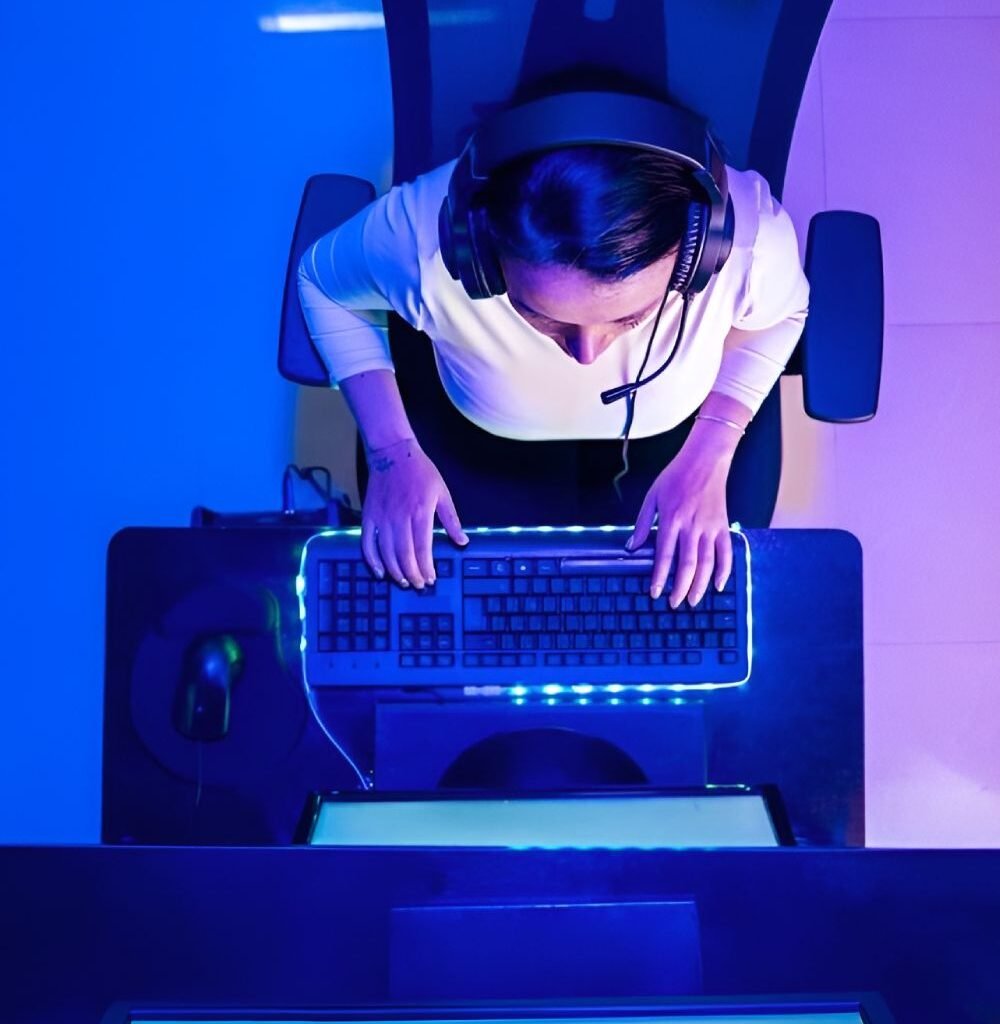Are you looking to get into gaming but don’t know where to start? Building your own gaming PC can be a rewarding experience, and with the right parts and knowledge, you can create a powerful gaming machine. From finding the right components to assembling the PC, installing an operating system, troubleshooting issues, and upgrading your PC’s components, this blog post will provide an overview of everything you need to know about building a gaming PC. So if you’re ready to jump into the world of gaming PCs let’s get started!
Choosing the right components
Building your own gaming PC is a great way to get into the world of gaming, but it’s important to choose the right components in order to get the most out of your machine and stay within your budget. To make sure you have a powerful gaming machine, there are several key components to consider when building your PC: processor, graphics card, motherboard form factor and size, RAM speed and capacity, and storage options.
When selecting a processor for your gaming PC, it’s important to think about the types of games you plan on playing. If you’re looking for a more powerful system that can handle more intensive games like first-person shooters or RPG games, then you may need a higher end processor such as an Intel Core i7 or AMD Ryzen 5/7. If you don’t plan on playing complex games or if you have a tighter budget then an Intel Core i3 or AMD Ryzen 3 would be suitable. Similarly with GPUs (graphics cards), if you plan on playing high-end games then look for models from Nvidia’s GeForce RTX series while if cost is an issue then cards from their GTX series should provide enough power for most modern titles.
The motherboard form factor (ATX vs Micro ATX) should also be taken into consideration when building your PC as this will determine which type of case you use and how many components will fit inside it. Additionally, make sure that the socket type of your chosen processor matches the compatible socket type on the motherboard before settling on one model over another.
RAM (Random Access Memory) speed and capacity is also essential when considering what parts to purchase for your build. The amount of RAM required depends largely on the types of programs that will be running concurrently; 8GB is usually enough RAM for modern titles but 16GB should provide sufficient headroom should additional applications be running simultaneously while streaming or recording gameplay footage. When it comes to speed look at DDR4 SDRAM as this is currently the fastest option available – 3000MHz+ being optimal – although 2400MHz+ should still provide enough performance for most gamers without breaking the bank.
Finally, storage options need to be considered when building a gaming PC; traditional hard drives are often used due to their low cost but Solid State Drives (SSD) offer much faster read/write speeds while newer NVMe M2 drives can reach even greater speeds depending on how much money you’re willing to spend. Ultimately whether you choose an HDD/SSD/M2 drive comes down to personal preference based on price point versus performance desired from each individual component in relation to its use within the overall system build.
Assembling your PC
Building a gaming PC can be an exciting but daunting task. It requires research, patience, and careful attention to detail. Fortunately, assembling a gaming PC is simpler than it may seem. Here are the steps you need to take to get your new gaming PC up and running:
1. Research the best components for your budget: When building a gaming PC, do your research and compare different parts before making any purchases. Ensure that the components you choose are compatible with each other and meet your needs in terms of performance and budget.
2. Purchase the components: Once you’ve done your research, purchase all the necessary components online or at local retailers. Make sure they’re delivered safely before you start assembling them together.
3. Install the motherboard: The motherboard is where all of the main components will connect together within your case, so it needs to be installed first. Unscrew any panels from inside the case that may be obstructing access to the motherboard slots, then carefully insert it into its designated slot on one side of the case before securing it with screws provided by the manufacturer or included in your kit.
4 Connect other components: After installing the motherboard, install other components such as CPU chipsets, RAM modules (making sure they fit properly into their slots), graphics cards (ensuring there’s sufficient space for them inside their designated compartments), fans/heatsinks (depending on model), and any other necessary pieces like sound cards or Wi-Fi adapters. Finally attach all cables including power supply cables from a reliable source such as Corsair or EVGA for optimum power output).
5 Attach peripherals: Once everything has been securely installed inside your case, attach peripherals such as keyboards, mice, monitors etc., depending on what type of system you want to build (e.g., tower/desktop or laptop).
6 Test Your System: Once all of these steps have been completed successfully – congratulations! You have now built a fully functioning gaming PC! Before using it though, make sure you test out each component for compatibility and performance issues by running stress tests or benchmarking programs such as 3D Mark or Heaven Benchmark 4K Ultra HD Edition to ensure everything is working properly before playing games on it!
Installing an operating system
Installing an operating system on your gaming PC is a necessary step when building the perfect gaming rig. One of the first considerations is selecting an operating system that is both compatible with your hardware and suitable for gaming. Popular choices such as Windows 10, macOS, and Linux are all viable options. Once you have decided on an OS, you should be aware of its system requirements in order to ensure it runs smoothly on your PC.
After selecting the right OS for you, it’s time to download the latest drivers for your computer components. These drivers will allow your hardware to work properly with the OS of your choice and provide better performance overall. It’s important to make sure that all of your hardware components are up-to-date before installing any software or applications.
Once everything has been properly updated, it’s time to create a bootable USB drive or disc with the operating system of your choice. This allows you to install the OS without having to purchase physical media from a retailer or online store. After creating the bootable drive or disc, you can follow instructions in your computer’s BIOS in order to begin installation. Most systems have similar steps but may differ slightly depending on manufacturer and model number so be sure to read up on any specific instructions beforehand.
Installing an operating system can seem daunting at first but if done correctly can result in a smooth running machine that will last you years into the future! Taking care to select an appropriate OS, update all necessary drivers, and use a bootable device will help ensure success during installation so don’t hesitate to do some research before getting started!
Troubleshooting tips
Tackling any difficulties with your customized gaming PC can be intimidating. Yet, it doesn’t have to be a difficult process when you’re armed with the right tools and resources. Here are some useful tips to help you troubleshoot any issues that come up efficiently and quickly.
Start by identifying the source of the issue. Make sure all components are securely connected, and then review the BIOS settings for accuracy. If something appears off, take a look at your motherboard manual or online tutorials for help on how to adjust them accordingly.
The second step is to make sure all the drivers and software are current by downloading their latest versions from their respective websites or manufacturer’s support page. This involves both hardware drivers as well as game updates if necessary. Moreover, system monitoring tools such as SpeedFan will monitor temperatures of components including CPUs and GPUs in order to prevent overheating during extended gaming sessions.
If these steps fail to resolve the problem, search for more detailed tutorials online or contact customer service from the manufacturer of your component for assistance. Adhering to these suggestions will ensure that your gaming PC runs smoothly without potential complications along the way.
Upgrading your gaming PC
Upgrading a gaming PC is an ideal way to stay on top of the latest games and technology. Though it may seem intimidating if you’re not familiar with the process, there are straightforward steps for ensuring a successful upgrade.
First, examine different components like processors, GPUs, RAM speed and capacity, and storage solutions to determine which best meets your budget and performance requirements. Comparing prices between merchants can also help save money when procuring parts.
Checking compatibility of new hardware with existing components is essential to prevent problems during installation. Make sure that the motherboard form factor matches component size and other internal parts are compatible with one another. When replacing defective tech be sure that new hardware has identical specs so it functions properly with other system pieces.
Prior to installing parts into your gaming PC make a backup of all important files on an external drive or cloud-based storage service as insurance against data loss during upgrading or installation issues. Additionally, secure components firmly in place; loose elements may move inside your machine causing damage from vibrations created by hard drives spinning up or fans running constantly. Utilizing an anti-static wrist strap when handling sensitive internal parts like CPUs or GPUs prevents static electricity discharge from your body damaging them too severely. Plus check all cables are secured correctly before powering up the system again; unconnected wires may lead to short circuits resulting in damage of interior components if left unrecognized.
By following these steps carefully when improving your gaming PC you can guarantee that due precautions were taken before continuing with installation of new gear providing you a smooth experience while playing games on your upgraded rig!







